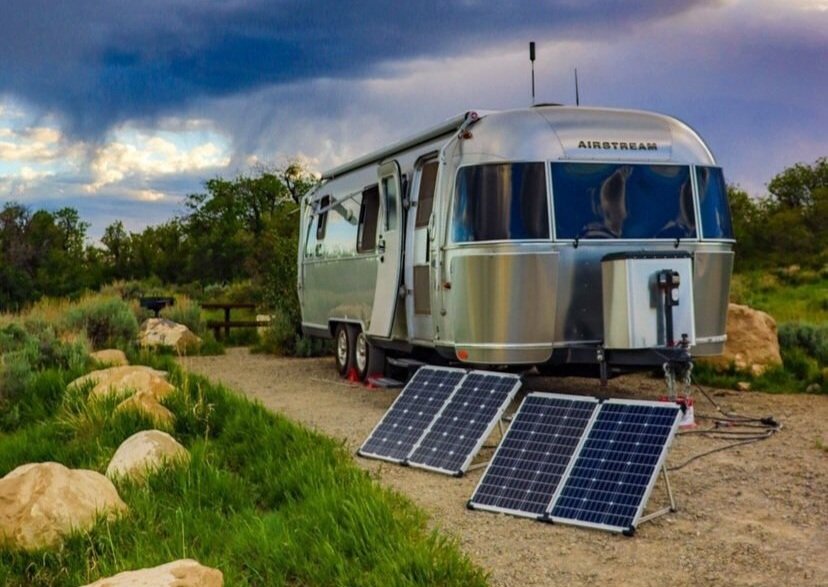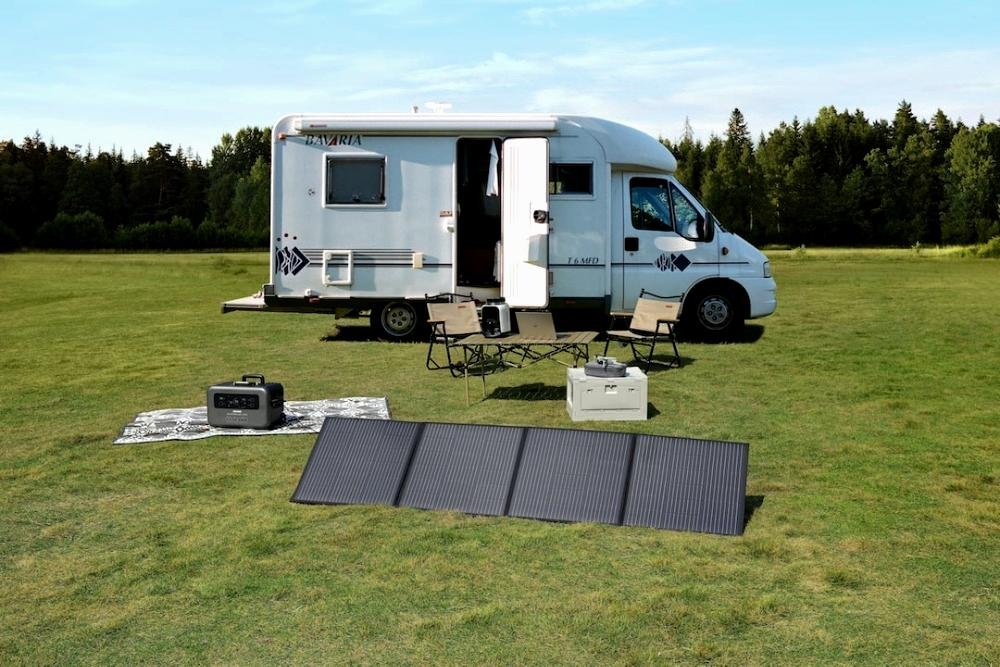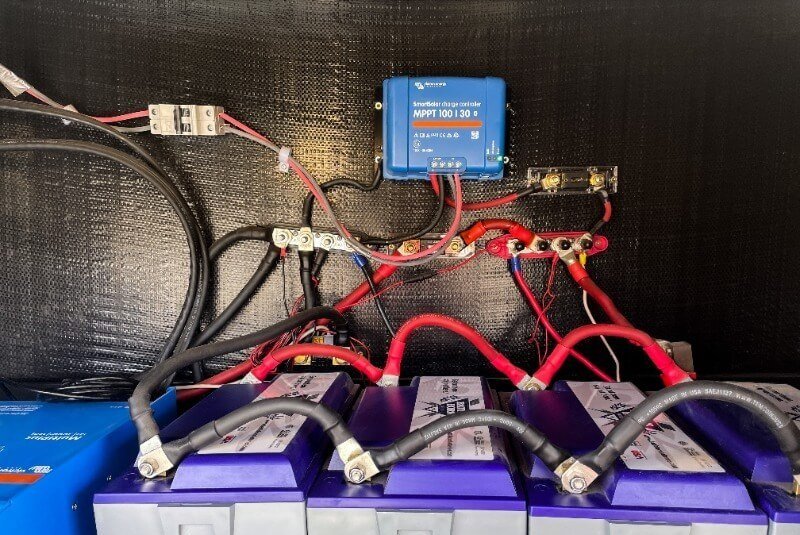Guide to Sizing an RV Solar Charge Controller (+Top Brands)
Solar charge controllers come in all shapes, sizes, and price points.
Choosing the correct charge controller for your RV solar system is a very important step to make sure you are maximizing your output.
Using a charge controller that is too small can reduce the amount of solar power you generate by up to 50% or you could fry your system by going over the voltage rating.
Alternatively, using a charge controller that is too big is a waste of money.
RV Solar Charge Controller
Charge controllers take the raw electricity generated by the solar panels and convert it into energy that can be stored in your batteries.
RV battery banks can accept power at either 12 or 24 volts depending on how you wire them (12 volt is more common than 24 volt), and solar panels typically generate electricity much higher than this voltage.
Having a quality charge controller will protect your batteries from excess voltage that could result in costly damage.
In this post, I will walk you through how to calculate the voltage coming from your solar panels and how to use this information to determine your spec requirements for your charge controller.
Selecting an RV Solar Controller
When shopping for RV solar charge controllers, make sure you get an MPPT controller rather than a PWM controller.
While MPPTs are more expensive, they are 30% more efficient allowing you to save money on other components.
Spending an extra $100-200 on an MPPT controller will save you at least $200 that you would have to spend on extra solar panels and batteries with a PWM controller.
RV Charge Controller Sizing: Volts
When sizing a charge controller, you first want to focus on the voltage that you are generating.
Look at the pictures of the Victron SmartSolar charge controllers above.
The first number that is listed on each controller after “MPPT” is the maximum voltage.
A standard solar panel is rated at 22.5 open-circuit volts. That is the maximum voltage that the solar panel can generate in ideal conditions.
When sizing your charge controller, your voltage will be the limiting factor.
Let’s look at a few common RV solar setups to see how to calculate the proper size for your charge controller.
For these scenarios, we will assume the panels are standard panels capable of producing 22.5 open-circuit volts.
4 x 100 watt solar panels connected in series:
As I mentioned above, connecting panels in series increases the voltage by a factor of the number of panels in the series.
22.5 volts per panel x 4 panels = 90 volts going to the charge controller
This means that you will need a charge controller with a maximum voltage of at least 90 volts.
I suggest that you choose the 100 volt Victron SmartSolar charge controller.
Victron’s SmartSolar controllers are my favorite because you can use the free Victron Connect app to control and monitor your charge controller remotely.
4 x 100 watt solar panels connected in series-parallel (2 series of 2):
By connecting your panels in series-parallel, you can limit your voltage and reduce the size of your charge controller.
22.5 volts per panel x 2 panels in each series = 45 volts going to the charge controller
This means that you will need a charge controller with a maximum voltage of at least only 45 volts.
Rather than the $226 100 volt controller you would need for the series setup above, you could choose this $118 Victron controller that maxes out at 75 volts.
This $100+ savings is one of the major reasons to choose a series-parallel setup.
RV Charge Controller Sizing: Amps
The second number shown on the Victron controllers above is the max amps that the charge controller can add to the battery at any given time.
The max number of amps you can generate is the total watts of your solar panel setup divided by the voltage of your battery bank (usually 12 or 24 volts).
Let’s look at the examples above to see how many amps will be generated so you can size your charge controller accordingly.
Both setups have a total of 400 watts of solar power. How you wire you solar panels will not impact the total power being generated.
If you are using a 12 volt battery bank, 400 watts will max out at 33.3 amps (400 watts / 12 volts).
To make sure you capture the full 400 watts, you will need a charge controller with an amp rating of at least 33.3 amps.
Best Brands: RV Solar Charge Controller
As I mentioned above, my favorite brand of charge controller is Victron. They make high quality products that they stand behind with great customer service.
Another reason I love Victron charge controllers is the connection with the Victron app.
I can check how much power is coming into and out of my charge controller in real time on my phone using Bluetooth.
While Victron is the best, this is reflected in their price at $100-300 depending on the volt/amp specs.
Renogy is the most common alternative to Victron in the RV solar world. Renogy makes quality products at an affordable price.
Choosing a Renogy charge controller will save you around $50-100 compared to the Victron equivalent.
While Renogy has a strong brand presence, their products tend to have more issues than Victron products and I have heard their customer service can be a nightmare if something does go wrong.
I hope this article helped you learn about sizing your charge controller for your RV solar setup. Leave a comment below if you have any questions or if you have any related topics that you would like to read about.








